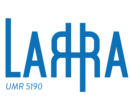Scope note for the class Segment of Matter – S22 Back
Candidate
Scope note
- Text
This class comprises physical features with relative stability of form and structure within a declared spatial volume of interest. The spatial extent of an instance of S22 Segment of Matter may be declared or defined by a researcher or observer usually because the arrangement and composition of substance is characteristic for the surrounding matter or can be interpreted as traces of its genesis and subsequent internal and external processes it was exposed to. The defining spatial extent is typically declared on a continuous matter by means of geometric determination without observable boundaries on all sides or any side. It may however be extracted at some point in time along the declared boundaries.
An instance of S22 Segment of Matter is regarded to be existing from the time on it completely solidified with a structure that is still preserved in a recognizable way at the time of its spatial definition. Its existence is regarded to end when its respective integrity is partially or completely corrupted. Uncorrupted subsections of an instance of S22 Segment of Matter may continue to exist as segments of matter in their own right beyond the existence of the containing instance, and may have solidified before it.
Typical examples are segments of archaeological or geological layers. They are regarded as uncorrupted even if they have undergone conformal deformations, such as compressions or shifts, as long as the effects of these deformations do not destroy the relevant structures of interest. This means that the defining spatial volume may be only geometrically valid for an instant of time for which it was declared, and undergo before and after deformations. In some cases, it may be possible to calculate the initial volume at the time of solidification, for instance for petrified bones compressed in Jurassic layers.
- Language
- en




Comments
No comment found.